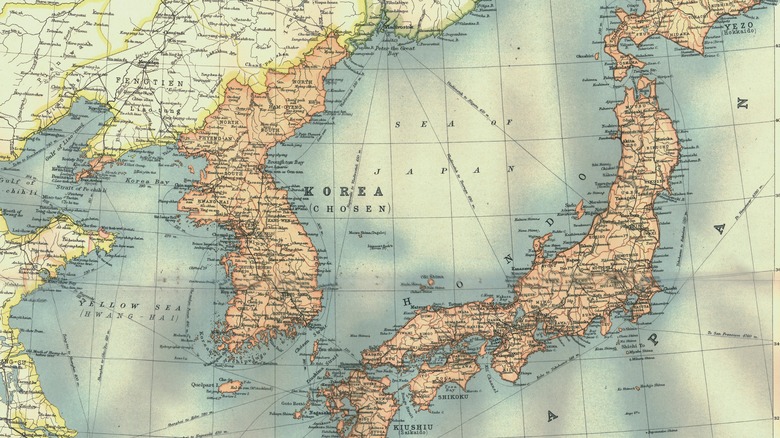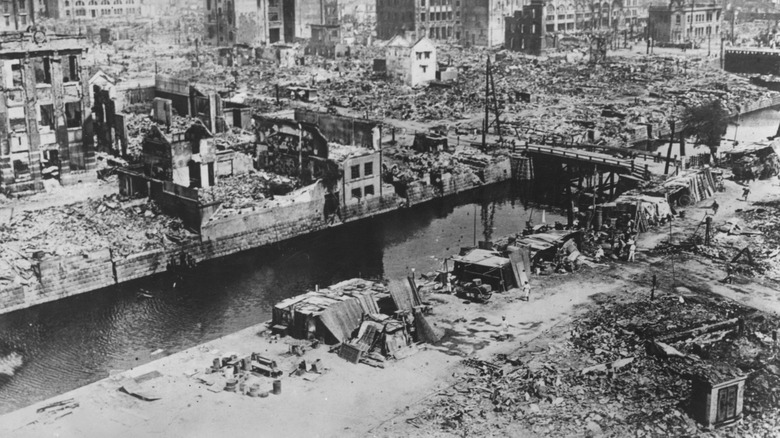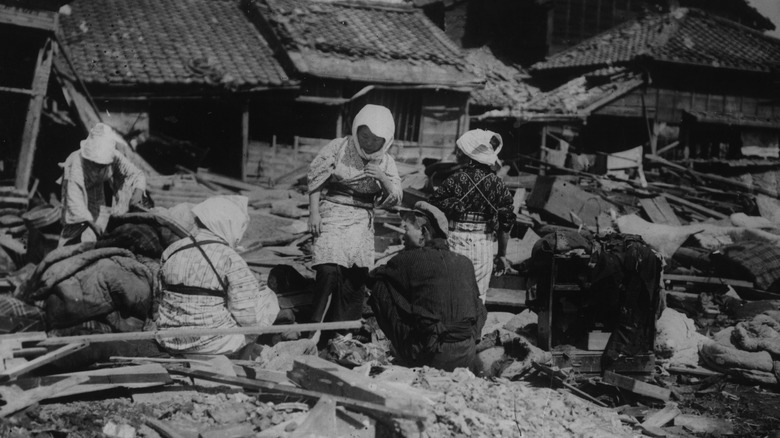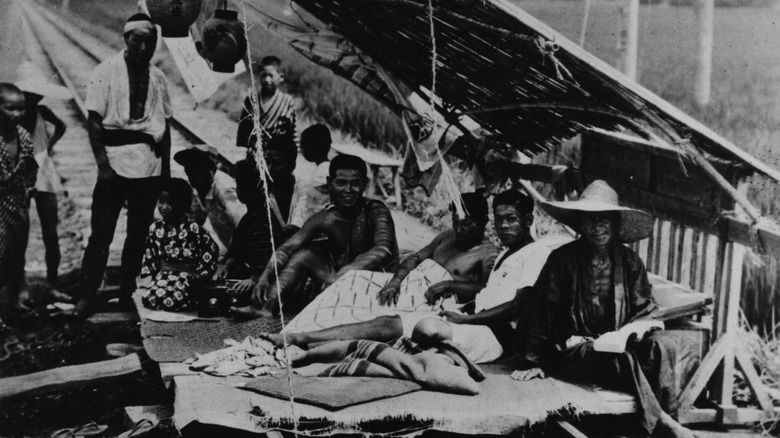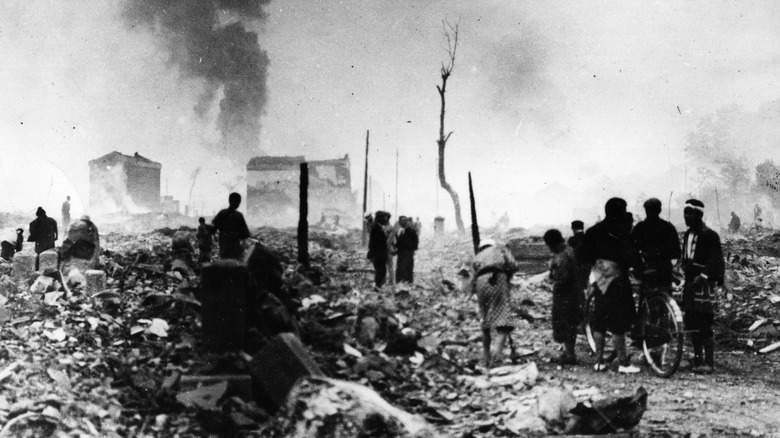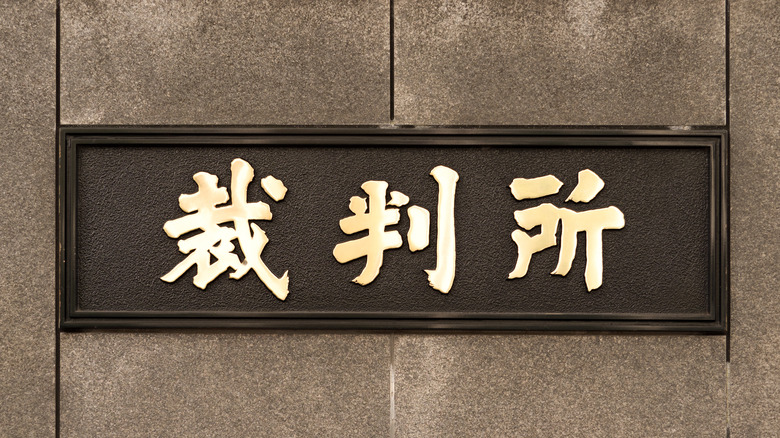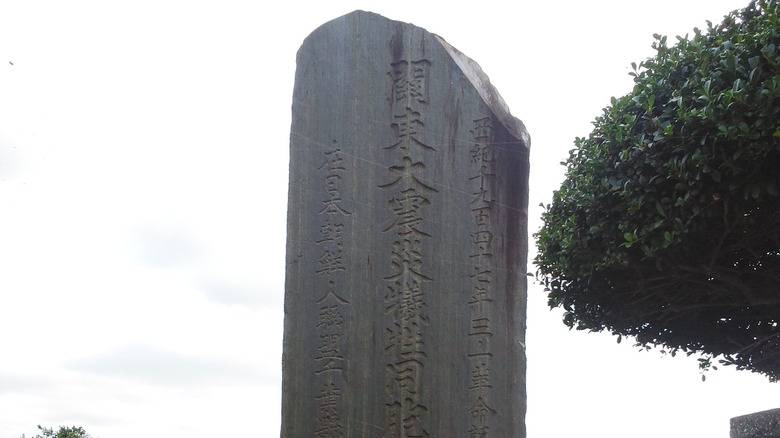The Untold History Of The Kantō Massacre
In 1923, an earthquake devastated a region of Japan, but the devastation wouldn't fade along with the aftershocks. Instead, some of those who survived the earthquake were forced to survive waves of massacres as vigilante groups and police officers looked for people to lynch.
The massacre that followed the Great Kantō earthquake turned what was already a horrific event into an absolute tragedy. Meanwhile, the massacre continues to be denied and whitewashed in contemporary Japan. Some claim that the massacre never happened, while others claim that it was justified. But even those who believe the massacre was justified often still try to pin the blame on someone else.
Although this event is sometimes written off as a mass panic that culminated in scapegoating and murder, the reality of the situation is significantly more sinister. Even though the massacre may not have been meticulously planned as a top-down strategy, sometimes a few matches are all it takes to start a firestorm.
1923 Great Kantō earthquake
On September 1, 1923, Imperial Japan was hit by the Great Kantō earthquake. The Kantō Plain was affected and both the cities of Tokyo and Yokohama were absolutely destroyed. Much of the destruction didn't come with the earthquake itself, but with the subsequent fires started in its wake.
Measuring between 7.9 and 8.2 magnitude on the Richter scale, the Great Kantō earthquake occurred just a few minutes before noon, a time when there were large numbers of people cooking food. As stoves were overturned in the earthquake, flames quickly spread, fueled by the wooden houses and winds. According to Smithsonian Magazine, with water mains destroyed as well, the fire department couldn't even help. The 40-foot tsunami caused by the earthquake also contributed to the damage.
In total, the death toll was estimated to be over 140,000 people. "Earthquake Engineering" notes that "90% [of the death toll] was due to the induced fires." One of the incidents most noted from the earthquake was the 300-foot-tall "fire tornado" that appeared by the Sumida River. Tragically, out of the 44,000 people who were trapped inside the fire tornado, having taken refuge at the Honjo Clothing Depot, only 300 survived, writes ThoughtCo.
The earthquake destroyed over 128,000 houses, while fires burned through another 447,000 houses. "By September 5, more than 33,000 square meters of Tokyo existed as nothing more than blackened remains and ash," per Natural Disasters in Asia.
False rumors spread
Less than 24 hours after the dust from the Great Kantō earthquake started to settle, false rumors began to spread. The rumors started in Yokohama and by 10 a.m. on September 2, the fires caused by the earthquake were being blamed on "arson and bombings by Korean malcontents." By 2 p.m., a story spread that up to 200 Korean people were "wantonly engaging in acts of murder, looting, and arson," and by 6 p.m., it was claimed that they were also poisoning well water and candy, according to Azalea: Journal of Korean Literature & Culture.
Although it's unclear exactly where the rumors started, Byung Wook Jung notes in Migrant Labor and Massacres that "public authorities played a significant part in due course for the rumor to circulate." The police also gave free rein to Japanese civilians, reportedly telling them that "You may kill Koreans if they resist," or "When you see a Korean behaving violently, you may beat him to death on the spot," according to a website devoted to the disaster.
Following Japan's colonization of Korea in 1910, anti-colonial movements were labeled insurgents and terrorists by the government, which sought to fuel racism against Korean people in Japan as well through an association between "Korean migrants, political subversion, and general criminality." This association is exactly what was encouraged and exploited after the Great Kantō earthquake.
Massacres by lynch mobs
Martial law was declared on September 2 and jikeidan, which were groups of local vigilantes, were also put together. The jikeidan, according to "The Enemy Within" by Jinhee Lee (posted at Eastern Illinois University), were armed with weapons supplied by the military, including clubs, iron pipes, swords, and bamboo spears as they set out to hunt for Korean people to assault under the pretext of "fire prevention" or "punishment." Uniformed officials also joined in on the massacres.
The police reportedly distributed 30,000 leaflets on September 4, which stated that it was no longer necessary to "oppress them (the Koreans) unlawfully or to inflict any violence upon them." However, this had little effect and it's unclear if the police even intended to quell the massacres.
In the Honjo township of Saitama prefecture, over 100 Korean people who were supposedly being held in "protective custody" at the police station were killed by a mob on September 4. In total, at least 6,000 Korean people in Japan as well as "several hundred Chinese and Japanese mistaken for Koreans" were massacred in the course of a week, per Brown University. The Asia-Pacific Journal writes that dead bodies were dumped in the riverbanks and by street corners, "many with hands tied behind the back and vivid marks of torture manifesting."
The Amakasu Incident
During this time, the police and the imperial army also sought out people in Japan who were considered political dissidents and targeted them for arrest and assassination. This included "Japanese anarchists, socialists and other dissidents," according to The Asia-Pacific Journal. The most famous of these assassinations is known as the Amakasu Incident, named after the police officer that led the assassination.
On September 16, Ōsugi Sakae, Itō Noe, and Ōsugi's six-year-old nephew Tachibana Munekazu were arrested by the military police. Ōsugi and Itō were prominent anarchist and feminist activists and, according to "Ōsugi Sakae, Anarchist in Taishō Japan" by Thomas A. Stanley, "many have surmised" that the assassinations were ordered by the government or the army. However, it's also possible that they were simply targeted by the police because of their political associations, rather than as part of a top-down plot.
All three were killed by strangulation, in addition to being severely beaten, and the bodies were thrown into an abandoned well. Although Lietutenant Amakasu Masahiko, the leader of the military police squadron responsible for the murders, was court-martialed and sentenced to 10 years imprisonment, he only ended up serving three years before receiving general amnesty, per the "Historical Dictionary of Japan."
Show trials and suppression
Although MP Tabuchi Toyokichi proclaimed during parliament that the massacres of Korean people in Japan was a "gross act of humanity," few ever suffered consequences for their actions during the pogrom. According to Great Kantō Earthquake, only 125 members of the jikeidan were charged with crimes committed after the earthquake. Lee writes in The Enemy Within that the trial didn't even make the effort to appear serious: "The judge and accused were laughing and smiling throughout the proceedings." During the trial, the distribution of the weapons was also deemed to have been "appropriate."
Out of the 125 brought to trial, only 32 were convicted and given formal sentences. Another 91 received suspended sentences and two were acquitted. Jung also notes in Migrant Labor and Massacres (posted at University of California Berkeley) that there was a stark difference in sentencing when it came to who was murdered. Those who murdered Korean people got "lighter sentences than those that involved murdering Japanese or usurping the authority of police." At the end of the day, the arrests and trials were for nothing more than "avoiding international criticism."
According to Brown University, news of the massacres was also suppressed within Japan. Newspapers were censored and Korean refugees were prohibited from returning to Korea, lest they spread news of the massacre.
Denial
Since it occurred, information about the Kantō massacre has been suppressed, whitewashed, and denied. During the first anniversary of the earthquake and the subsequent massacre, the Tokyo Municipal government issued a collection of personal narratives from survivors, in which Japanese civilians were described as "heroic" while the government was "lauded for its helpfulness after the earthquake struck, including helping Korean survivors," according to "Toward a Criminology of Disaster" by Kelly Frailing and Dee Wood Harper.
This rhetoric continued throughout the 20th century, but in the 1990s, the Japanese government tried to distance themselves from the historical massacre, claiming instead that the jikeidan were the sole perpetrators of the massacre. Meanwhile, in 1973, a monument was put up dedicated to the Korean victims of the Kantō massacre and since then, "the right-wing bloc and political circles in Japan have repeatedly demanded" for it to be removed.
In 2017, the Japanese government reportedly removed a link to a report about the Kantō massacre, and although it was republished, an unnamed official reportedly stated that the Japanese government had received "numerous complaints about its content," according to Yonhap News.
In 2020, Governor of Tokyo Yuriko Koike skipped the anniversary eulogy for the victims of the Kantō massacre for the fourth year in a row, although the victims of the Great Kantō earthquake were acknowledged. Groups such as Nihon Josei no Kai Soyokaze continue to claim that the massacre never happened, per The Asahi Shimbun.
